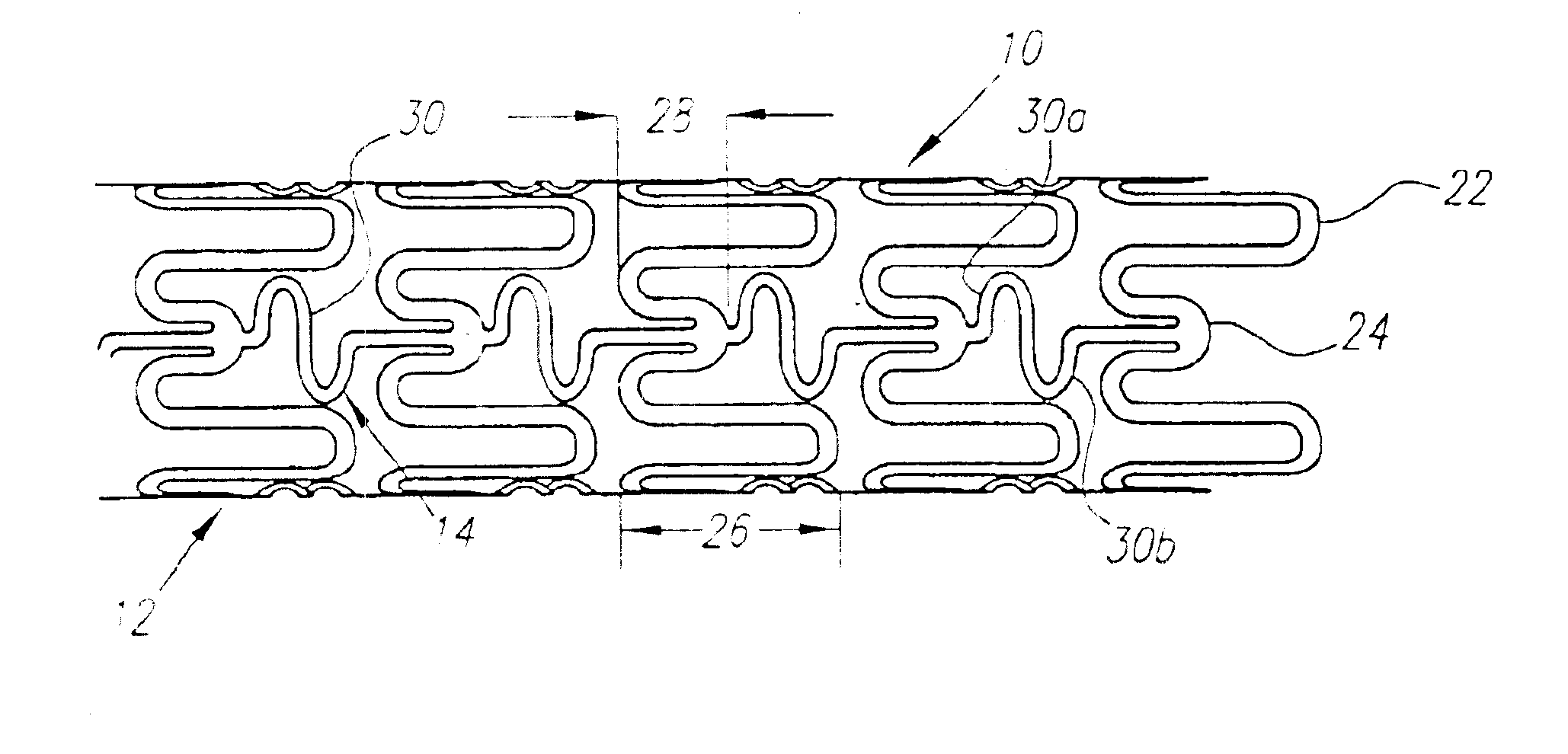Deformable scaffolding multicellular stent
a multi-cellular, scaffolding technology, applied in the direction of prosthesis, surgical staples, blood vessels, etc., can solve the problems of increasing the rigidity of the stent, affecting the advancement of the stent around tight bends in the artery, and affecting the treatment of patients, so as to facilitate the advancement of the stent delivery device, facilitate the withdrawal of the elongate member, and facilitate the effect of insertion
- Summary
- Abstract
- Description
- Claims
- Application Information
AI Technical Summary
Benefits of technology
Problems solved by technology
Method used
Image
Examples
Embodiment Construction
Turning now to the drawings, FIGS. 1-3 show a preferred embodiment of an implantable prosthesis or stent 10 in accordance with the present invention. Generally, the stent 10 includes a plurality of expandable cylindrical segments or “cells”12 and a plurality of articulating connectors 14 which extend between adjacent cells 12.
Preferably, the stent 10 is an initially solid tubular member, defining a longitudinal axis 16 and a circumference 18, that is preferably formed from a substantially plastically deformable material, such as stainless steel Type 316L, tantalum, MP35N cobalt alloy, or Nitinol. The walls of the tubular member are selectively removed by high precision cutting, e.g. laser cutting, chemical etching, water jet cutting or standard tool machining, to provide the pattern of cells 12 and connectors 14 described in detail below. Alternatively, the stent may be formed from a flat sheet of material that is rolled and axially fused together after creating the pattern of cells...
PUM
 Login to View More
Login to View More Abstract
Description
Claims
Application Information
 Login to View More
Login to View More - R&D
- Intellectual Property
- Life Sciences
- Materials
- Tech Scout
- Unparalleled Data Quality
- Higher Quality Content
- 60% Fewer Hallucinations
Browse by: Latest US Patents, China's latest patents, Technical Efficacy Thesaurus, Application Domain, Technology Topic, Popular Technical Reports.
© 2025 PatSnap. All rights reserved.Legal|Privacy policy|Modern Slavery Act Transparency Statement|Sitemap|About US| Contact US: help@patsnap.com



